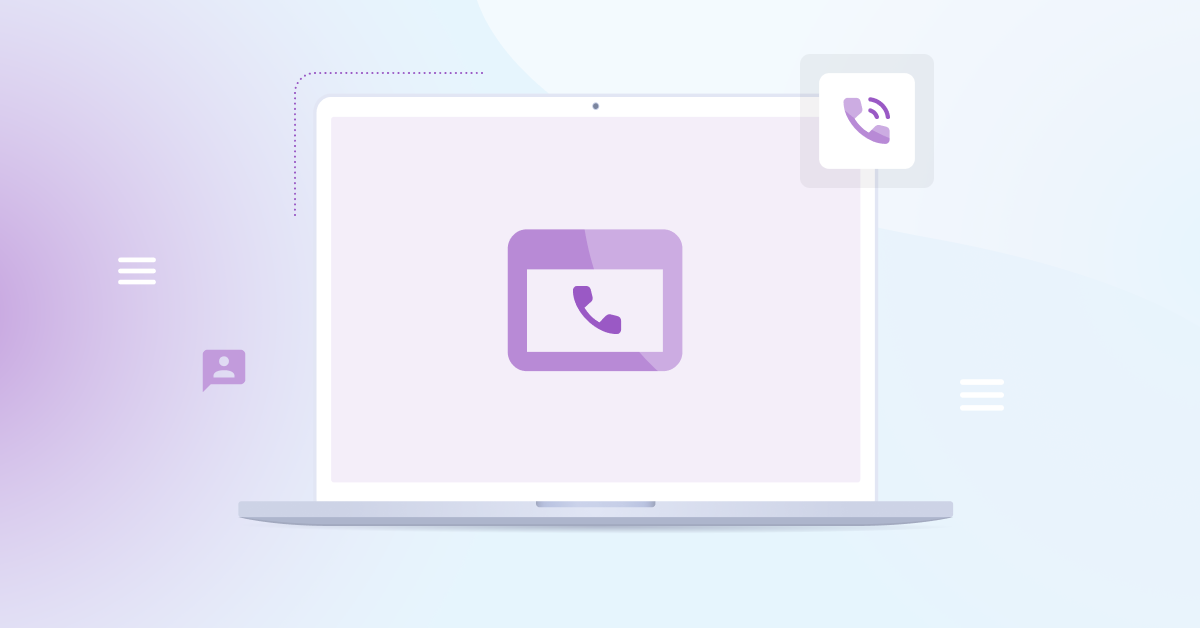WebRTC is making business apps easier to use, more engaging, and more powerful. But how exactly does it work, and why should businesses consider using it? We’ll cover it all in this article.
What is WebRTC, and how does it work?
The ‘RTC’ in WebRTC stands for real time communication. So WebRTC is simply real time communication that happens via the web. Any time you’re online, and connect with someone via voice or video without leaving your browser or app, that’s WebRTC. Google Hangouts is a popular example of a platform using WebRTC.
WebRTC is an open source protocol that runs on HTML5 and allows for live voice or video calls to connect over the internet without any cellular or landline connection.

WebRTC vs. WebSockets
There are other ways to enable in-app calling, such as WebSockets, where data is transferred from the call initiator’s browser, to a server, and then to the other user’s browser. WebRTC is different because it cuts out that server step in the middle. Calls are routed directly between browsers. This eliminates the slight lags that can occur with WebSocket connections.
Why consumers (and businesses) love In-App Calling
Users love in-app calling because it lets them do more, with less hassle. Sure, switching to the calling app on your phone isn’t the big-est hassle in the world, but it’s still an extra step.
As we mentioned earlier, call quality is great when calling between WebRTC endpoints because there aren’t any extra hops with servers—the calls connect directly between browsers. And when the call is between WebRTC and SIP endpoints, you’ll want to ensure your provider can easily convert the call and support each leg without any lapse in quality.
Another big advantage with WebRTC is the ability to transfer metadata from the calling party’s browser or application in such a way that the answering party can see it instantly. This functionality can be used to empower agents to resolve issues more quickly, making contact center operations more efficient, and customers happier.
In-App Calling use case examples
There are myriad ways businesses can harness the power of WebRTC and In-App Calling to make business run smoother, save on costs (goodbye high-cost toll-free!!), and drive better customer satisfaction. Here are just a few:
B2C Customer Service
When your customers are engaging with your website or app to solve an issue, In-App Calling makes it easier for them to escalate their request to a live call, without having to shift to dialing a number.
B2B Marketing
Let interested prospects call you with their inquiries, instead of submitting forms and then waiting for a reply. What sales team doesn’t want more inbound leads?!
Healthcare Scheduling
Solve scheduling dilemmas faster by allowing patients to speak with representatives right from your scheduling app, instead of taking time to switch over to a calling app.
Provider Calls
End practitioner follow-up and nurseline phone tag by allowing patients to connect directly with a nurse or doctor from your CRM app.
Billing
Integrate your billing processes and let customers make the most of online account balances and statements, while still keeping an easy way for them to speak with agents.
Tourism and Hospitality
Become your guests’ favorite destination when your team answers questions, books reservations, and updates tickets seamlessly and painlessly with an integrated browser and calling experience.
Are there any downsides to using WebRTC?
Compared to other technologies, WebRTC is pretty new, having launched in 2011. So there are a few growing pains. The video calling capabilities haven’t been fully refined, so there can still be quality and battery usage issues. However, the voice calling functionality is less affected by these challenges, making it a great tool to start implementing today.
The future of WebRTC and In-App Calling
As consumer transactions move increasingly online, and more companies produce high-quality apps as the focus of their customer service, In-App Calling will continue to gain in popularity. In fact, Technavio released a report predicting that the WebRTC market will grow by $66.6 billion between 2022 and 2027.
Customers will start to expect the ability to connect within an app or browser. Having to dial a number will start to feel like even more of an inconvenience. Businesses who don’t want to fall behind will be working hard to ensure they have a solid click-to-call experience in place.
Learn more about In-App Calling
When you’re choosing a provider for your In-App Calling, it’s important to consider whether a vendor has the technology to support your use cases, whether it’s a good fit for your tech stack, or adds extra complexity, and what kind of support you’ll get for setting up your In-App Calling, and getting help from support when you need it. After all, In-App Calling is just like your regular phone lines in that customers will expect to be able to get through at all times.
At Bandwidth, In-App Calling is one part of our larger communication API suite, so you can consolidate your vendors and get voice and messaging from one place. And our support is second to none. So if you’re interested in learning more, learn more about Bandwidth’s In-App Calling, or explore more programmable voice services.
Embed calls in your app
Explore how Bandwidth’s In-App Calling API can help you improve your CX.



